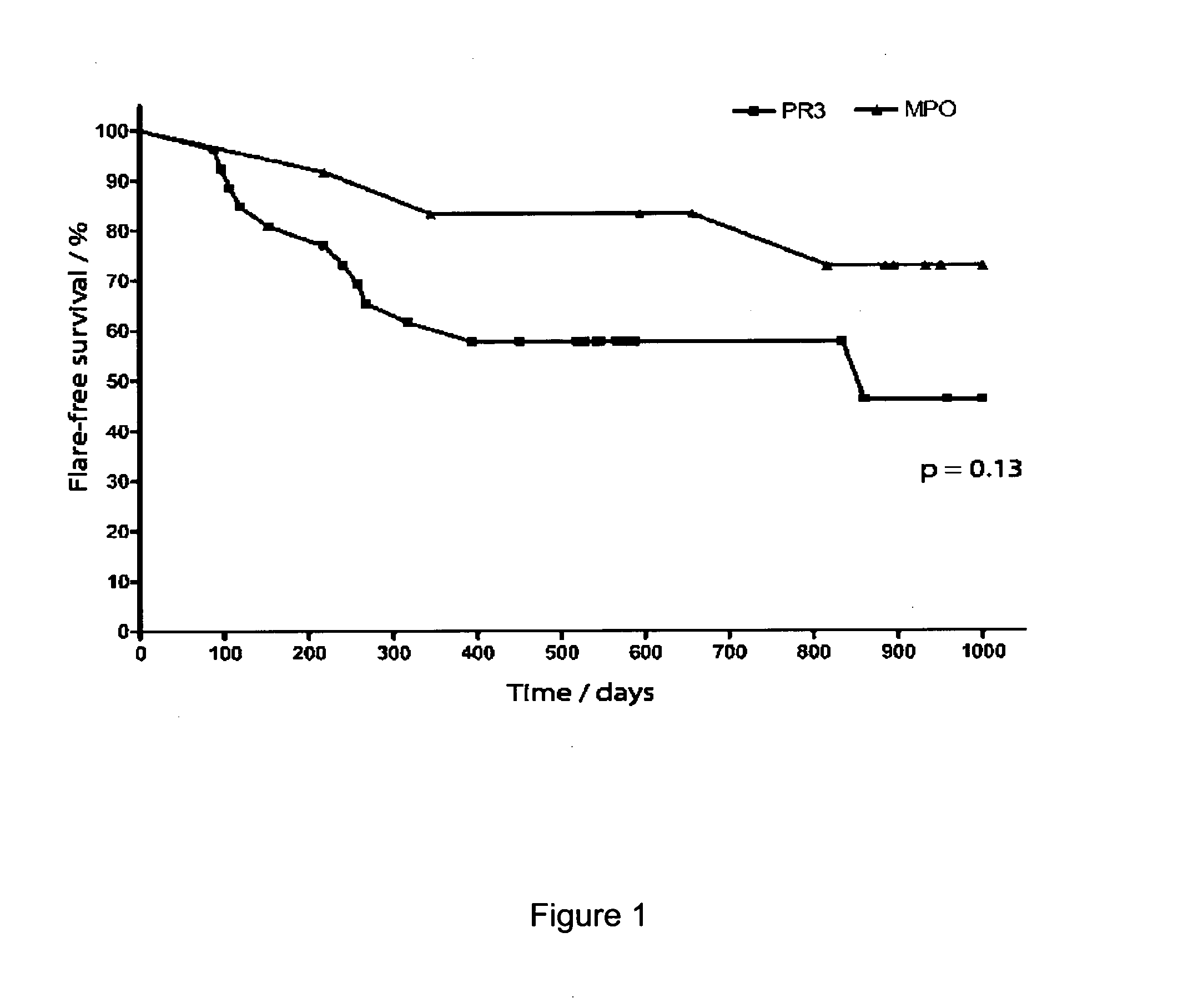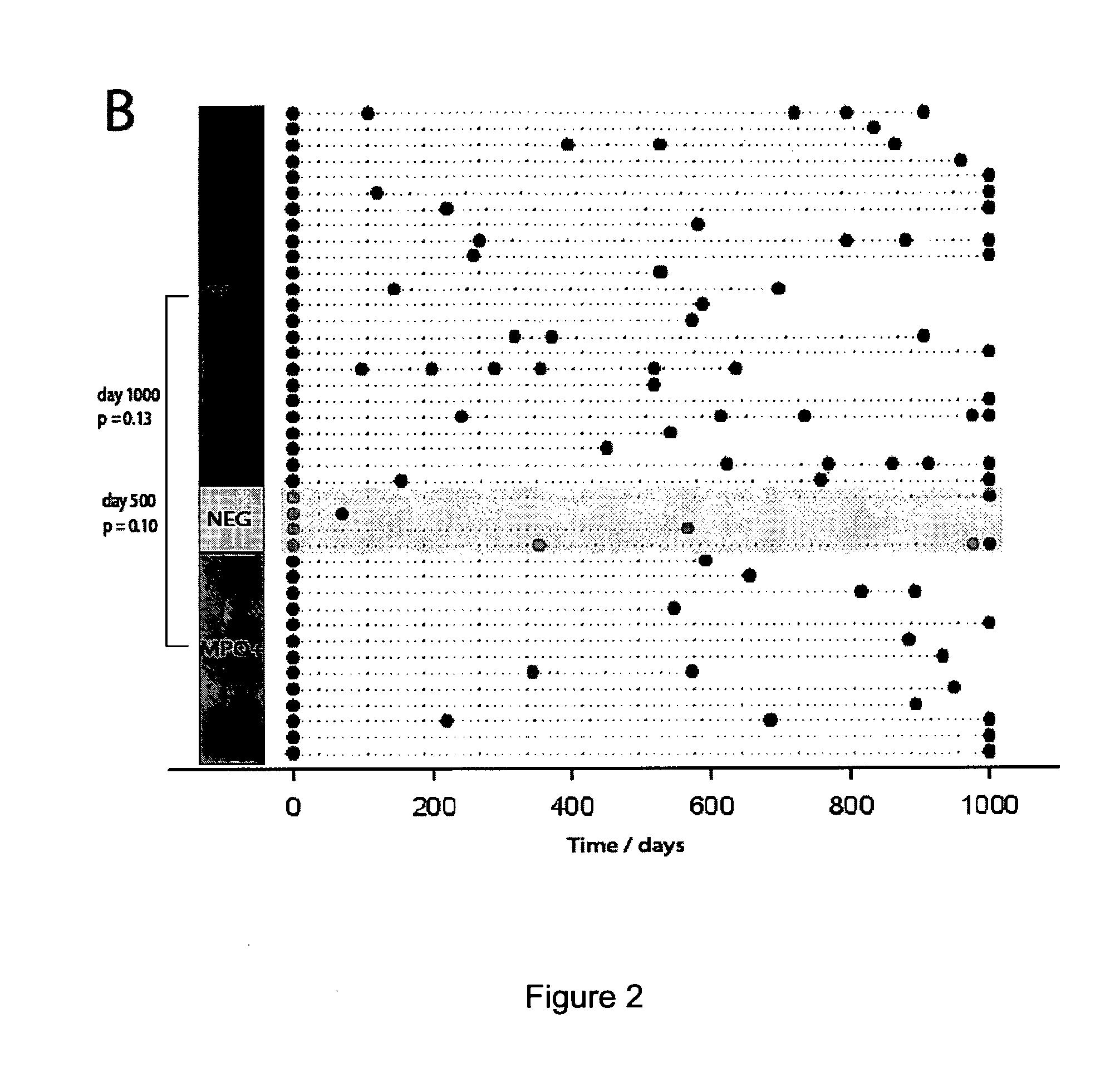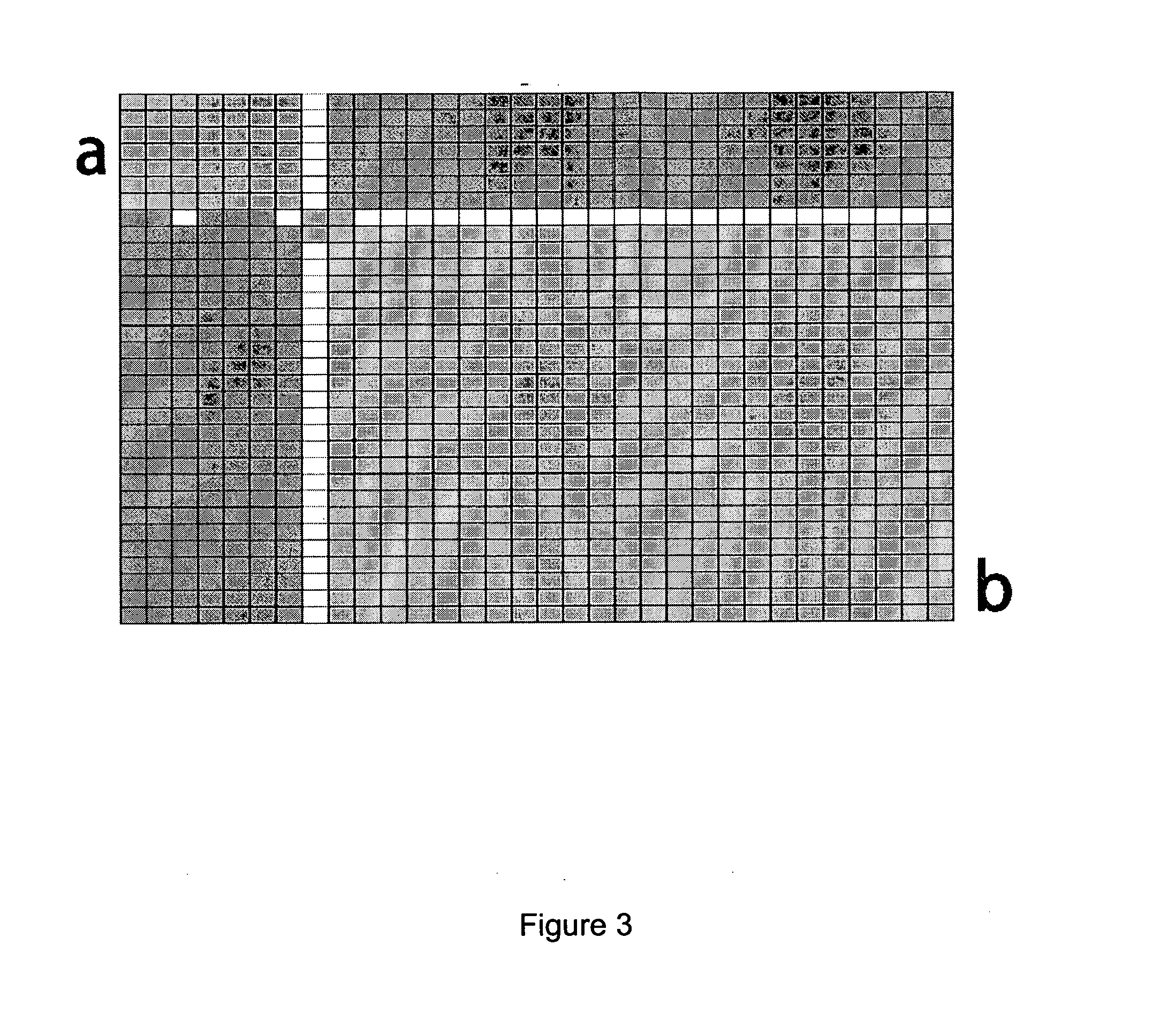Methods for predicting autoimmune disease risk
a risk factor and autoimmune disease technology, applied in the field of predicting autoimmune disease risk, can solve the problems of inability to separate patients into clinically useful subgroups, analysis of pbmc gene expression profiles showing no meaningful substructure, etc., to achieve robust determination of prognostic value, accurate prediction, and optimization of predictive models
- Summary
- Abstract
- Description
- Claims
- Application Information
AI Technical Summary
Benefits of technology
Problems solved by technology
Method used
Image
Examples
example 1
ANCA-Associated Vasculitis (AAV)
[0281]AAV is a chronic and often severe autoimmune disease, which is divided into three clinical syndromes (Wegener's granulomatosis [WG], microscopic polyangitis [MPA] and Churg-Strauss syndrome) (Lane, 2005). All three are characterised by inflammation of medium and small vessels (small arteries, arterioles, capillaries and venules), anti-neutrophil cytoplasmic antibodies (ANCA) and a prominent CD8 and CD4 T cell infiltrate. ANCA are directed against neutrophil cytoplasmic antigens (anti-proteinase-3 [PR-3] is associated with WG, and anti-myeloperoxidase [MPO] with MPA), and are likely to contribute to disease pathogenesis. The syndromes have diverse and variable clinical features, including acute glomerulonephritis, granulomatous inflammation of the upper and lower respiratory tract (especially WG), neurological vasculitis and more. Mortality at five years is as high a 30%, and most of this is due to the infectious side effects of immunosuppressive...
example 2
Systemic Lupus Erythematosus (SLE)
[0295]To determine if the signature which correlates with prognosis in AAV is specific to that disease or is seen in other autoimmune diseases, we arrayed purified CD8 T cells from a cohort of patients with SLE, enrolled in parallel to those with AAV.
[0296]26 patients meeting the American Rheumatological Association definition of SLE were recruited. Patients had active disease on enrolment, as defined by the British Isles Lupus Activity Grade (BILAG) disease activity assessment, and they had had no previous evidence of disease or had quiescent disease on minimal maintenance therapy. All patients were then treated with high dose steroid and one of a number of induction therapies—all responding as evidenced by a fall in BILAG to 0 by 3 months. Maintenance therapy comprised lower dose prednisolone and azathioprine or mycophenolate mofetil. Samples were processed and data analysed in an identical fashion to that described for AAV above, though as a sing...
example 3
Normal Subjects
[0298]As a CD8 transcription signature divided two distinct autoimmune disease cohorts into 2 prognostically useful subgroups, we wondered whether such groups existed in the normal population. We therefore analysed a cohort of 22 normal controls in identical fashion to that described for the AAV and SLE patients described above. Interestingly, unsupervised analysis showed that these controls fell into two groups, c8.1 (control subtype 8.1) and c8.2 (control subtype 8.2), in broadly similar proportions to the AAV and SLE patients described above.
[0299]The gene list that defined c8.1 and c8.2 was used to cluster both SLE and AAV cohorts, and all patients were placed into the same subgroups as they had been when clustering was performed using gene lists generated from the disease groups themselves. To further confirm the similarity in transcription signatures defining the 8.1 and 8.2 subgroups, all CD8 T cell data (AAV, SLE and Control) was pooled and unsupervised hierar...
PUM
| Property | Measurement | Unit |
|---|---|---|
| Level | aaaaa | aaaaa |
Abstract
Description
Claims
Application Information
 Login to View More
Login to View More - R&D
- Intellectual Property
- Life Sciences
- Materials
- Tech Scout
- Unparalleled Data Quality
- Higher Quality Content
- 60% Fewer Hallucinations
Browse by: Latest US Patents, China's latest patents, Technical Efficacy Thesaurus, Application Domain, Technology Topic, Popular Technical Reports.
© 2025 PatSnap. All rights reserved.Legal|Privacy policy|Modern Slavery Act Transparency Statement|Sitemap|About US| Contact US: help@patsnap.com



